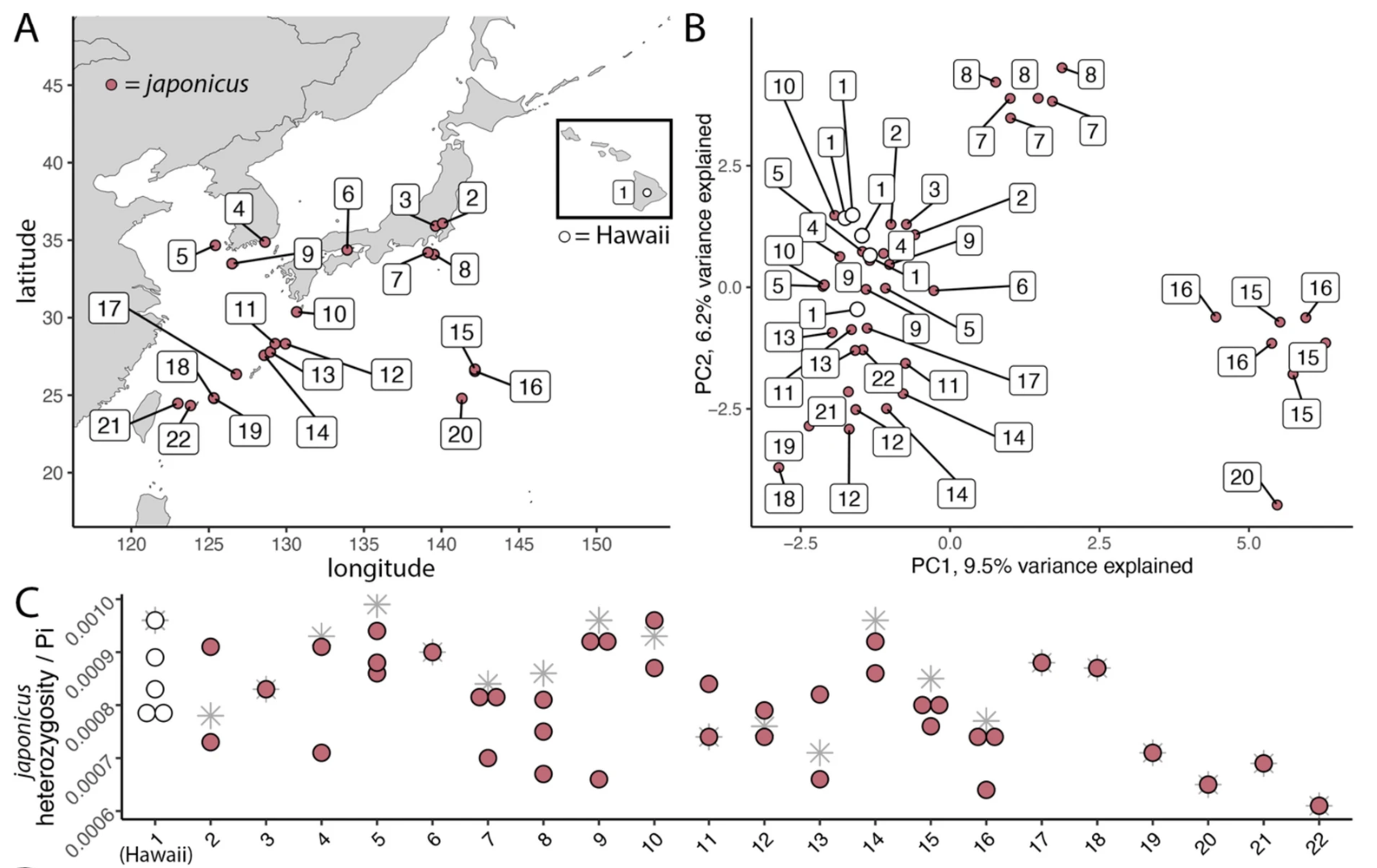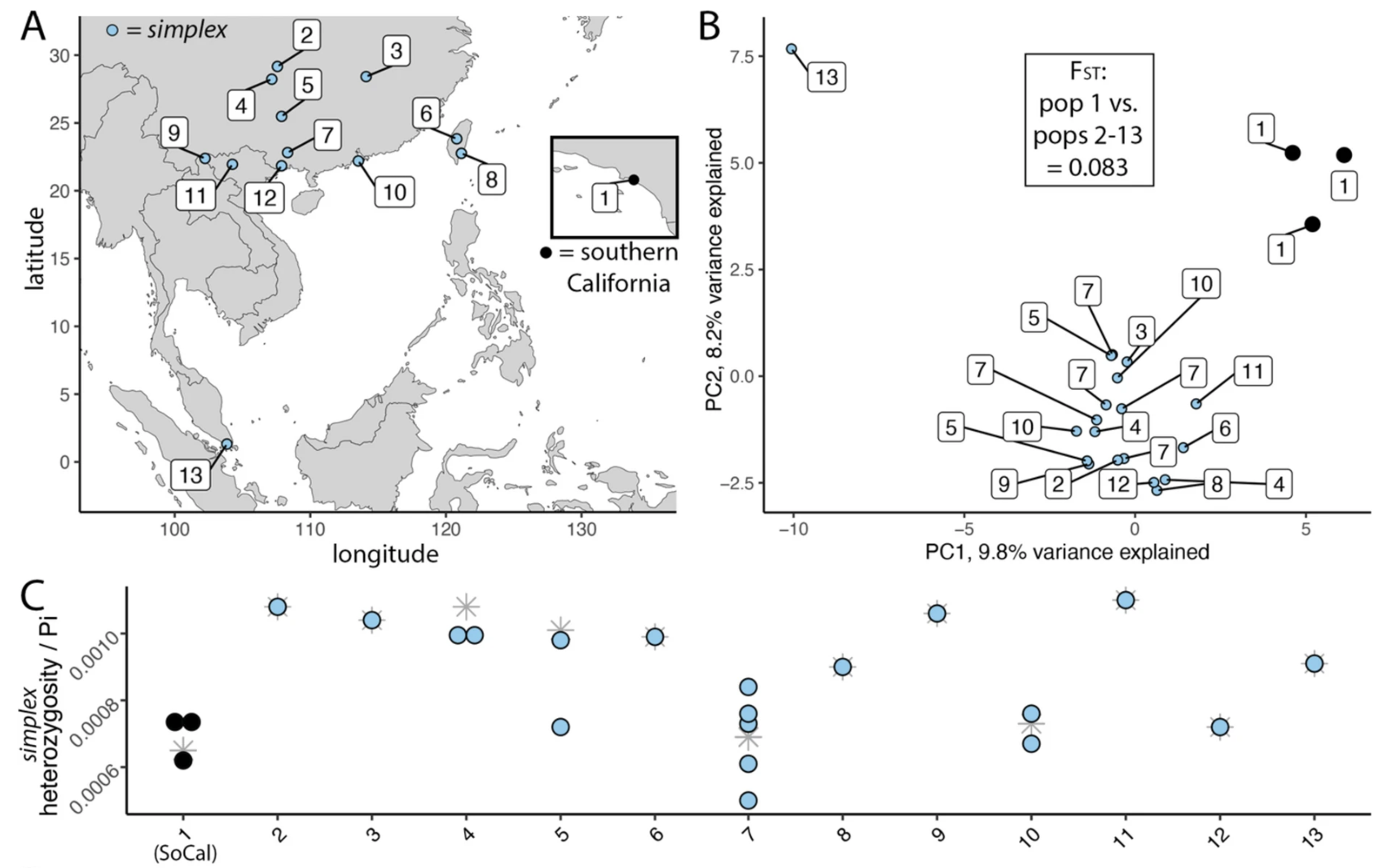Human translocations allow us to study the diversification process in real time
I also leverage human translocations as a unique and exciting way to study the process of diversification under natural conditions. I am currently developing two systems where birds were translocated via the pet trade and subsequently founded wild populations in southern California. These are the Zosterops white-eyes and the Amazona parrots. These recently established populations can offer natural experiments, where we can watch the process of a population colonizing and establishing a new locality in real time.
Using genomics to reconstruct the introduction of Zosterops white-eyes in the USA
- open access link to the manuscript: On the brink of explosion? Identifying the source and potential spread of introduced Zosterops white-eyes in North America.
Already, I have published an investigation demonstrating that the white-eyes introduced in Hawaii and Southern California are different species, derived from completely separate introduction events. Further, the birds in Hawaii show no superficial signatures of a genetic bottleneck:

Meanwhile the birds in Southern California do appear to have experienced a genetic bottleneck:

Future projects will focus on investigating how, despite these apparently very different introduction scenarios, both of these populations appear to be thriving.
